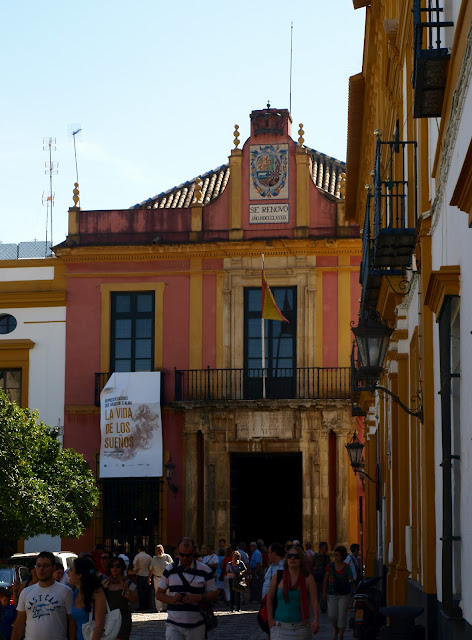Las excavaciones arqueológicas impulsadas por el Patronato del Real Alcázar en el Patio de Banderas iniciadas en noviembre de 2008 propiciaron la identificación del más antiguo vestigio de ocupación humana de la ciudad hispalense.
Estos trabajos han sacado a la superficie una secuencia estratigráfica que prueba la "ocupación" del Patio de Banderas desde el siglo VIII antes de Cristo, de cuyo periodo se ha rescatado un fondo de cabaña con vestigios de un horno o cocina como la más antigua huella de presencia humana en la ciudad, hasta el siglo XI con el dominio musulmán y la creación de un arrabal.
Los arqueólogos investigan el valor de los restos descubiertos en esta serie estratigráfica, entre los que destacan un antiguo edificio romano y lo que se identifica como basílica paleocristiana.
El primero de ellos corresponde a un edificio "de gran potencia" dada la envergadura de sus sillares y cuyos alzados se levantarían hasta los tres metros.
El primero de ellos corresponde a un edificio "de gran potencia" dada la envergadura de sus sillares y cuyos alzados se levantarían hasta los tres metros.
La cripta estará construida en diciembre de 2014 y su ejecución comenzará en marzo del año que viene, una vez haya concluido la última fase de las excavaciones arqueológicas.
The archaeological excavations stimulated by the Patronage of the Royal Fortress in the Court of Flags initiated in November, 2008 propitiated the identification of the most former vestige of human occupation of the Sevillian city.
These works have extracted to the surface a stratigraphic sequence that proves the "occupation" of the Court of Flags from the 8th century B.C., of whose period has rescued a bottom of cabin with vestiges of an oven or kitchen as the most former fingerprint of human presence in the city, up to the 11th century with the Moslem domain and the creation of a suburb.
The archeologists investigate the value of the remains discovered in this stratigraphic series, between which they emphasize a former Roman building and which are identified as early Christian basilica. The first one of them corresponds to a building "of great power" given the importance of his ashlars and whose gatherings would reach three meters.
These archaeological remains from the 9th century B.C. up to Muslims of the 11th century, happening for urban and architectural Roman and visigothic vestiges, will be seen in a future in a crypt that will be constructed in the Court of Flags.
The crypt will be constructed on December, 2014 and his execution will begin on March of the year that comes, once it has concluded the last phase of the archaeological excavations.









.JPG)